Reports
Darkhovin Nuclear Power Reactor: Another Blemish on Iran’s Safeguards Compliance
by David Albright and Mohammadreza Giveh
March 25, 2024
The Iranian regime has ambitious plans to build nuclear power reactors and is taking many steps to empower its domestic industries to become capable of building them, despite the many challenges. It has one operational power reactor today, the Bushehr 1 reactor, supplied mostly by Russia, and has plans to build several more, some from Russia and some by itself. But even the ones it plans to build itself have depended on foreign assistance. Although not immune from safety and security concerns, these power reactors have generally been outside the debate or investigations of Iran’s undeclared nuclear facilities and materials. However, the Darkhovin nuclear power reactor, aka IR-360 or Karun nuclear power reactor, has crystalized as another safeguards anomaly and standoff with the International Atomic Energy Agency (IAEA). This reactor and planned ones pose export control challenges, both as to Iran’s illicit acquisition of equipment and technology abroad and its potential spread of these goods to other countries.
IAEA Reporting and Construction Start-Up
In its February 26, 2024, quarterly Iran safeguards report, the IAEA listed the start of construction of the Darkhovin nuclear power reactor as a violation of Iran’s mandatory reporting requirements under subsidiary arrangements to Iran’s comprehensive safeguards agreement (CSA), modified Code 3.1. 1 The code requires Iran to provide notification and design information when it has taken a decision to build or authorize construction of a nuclear facility, let alone start construction of a new nuclear facility. Iran has failed to do so for the IR-360 reactor, where the 360 typically refers to its nominal electrical output in units of megawatts-electric (MWe). 2 The Atomic Energy Organization of Iran (AEOI) has stated it has no intention of coming into compliance with its Code 3.1 obligations, creating the standoff over this issue. According to the safeguards report, in November 2023, AEOI head Mohammad Eslami “made a statement referring to the excavation of the main building of the planned 360-megawatt reactor ‘in the coming days.’” The AEOI also made available on its website information regarding the start of construction “by order of the president.” In December, the IAEA then observed through analysis of satellite imagery “excavations of the reactor site,” according to the safeguards report.
In December 2022, Eslami visited the reactor site, comprising about 50 hectares. He told the assembled Iranian media that the IR-360 would be finished in about eight years and cost about two billion US dollars. 3
A February 5, 2024, letter from the IAEA to Iran requested updated design information for the reactor project. According to the IAEA, in a reply dated February 7, 2024, Iran “repeated its position that ‘implementation of modified code 3.1 is suspended’; ‘currently the legal obligation of the initial Code 3.1 is the legal obligation’ for Iran ‘under the Subsidiary Arrangements (General Part) of the CSA’; and that ‘relevant safeguards information for any new facilities… will be provided in due time.’” The IAEA emphasized Iran’s violation of modified Code 3.1, writing: “The Director General has reminded Iran on many occasions that implementation of modified Code 3.1 is a legal obligation” which Iran may not modify or suspend. However, the IAEA has acknowledged that Iran “was no longer prepared to work with the Agency to find a mutually acceptable solution” regarding implementation of modified Code 3.1.
This is not the first conflict between Iran and the IAEA over the Darkhovin reactor, but this standoff appears worse than previous ones. In 2007, after learning of Iran’s plans to build the Darkhovin reactor, the IAEA first requested preliminary design information. In September 2009, Iran provided the IAEA with preliminary design information, stating construction was scheduled to start in 2011, with commissioning to take place in 2015. After examining the design information, however, the IAEA requested additional clarifications regarding the design of the fuel assemblies and the facility layout. It also noted that Iran’s late submission of the design of the Darkhovin reactor was inconsistent with its obligations under modified Code 3.1.
Iran continued to refuse to provide the requested information until the implementation of the Joint Comprehensive Plan of Action (JCPOA) in late 2015 and early 2016. Under the JCPOA, Iran committed to “fully implement the modified Code 3.1 of the Subsidiary Arrangement to Iran’s Safeguards Agreement as long as the Safeguards Agreement remains in force.”
However, after Iran started violating the nuclear limitations of the JCPOA in 2019, it also stopped cooperating on Code 3.1, reverting to its illegal interpretation of Code 3.1 and leading to the current impasse with the IAEA, magnified since Iran started construction at the reactor site. With the JCPOA effectively dead, the prospects of resolving this issue are greatly reduced. Moreover, Iran today appears less willing to compromise its nuclear capabilities and more willing to go it alone, further reducing the chance of resolving this issue.
Safeguards and Export Control Implications
Iran illegally reverting to the original Code 3.1 means Iran believes it needs to provide notification to the IAEA only six months before it introduces nuclear material into a facility, which experience has taught could be after the nuclear plant is finished or even operational. That problem, identified in other countries’ nuclear programs decades ago, led to the modified Code 3.1 in 1992. Iran is the only state with significant nuclear activities and a Comprehensive Safeguards Agreement that has not implemented modified Code 3.1.
By intensifying its violation of modified Code 3.1 by starting construction of the Darkhovin reactor and adding that the issue is not subject to further negotiation, Iran has created a troubling standoff, at a time when there is increased concern about Iran building another gas centrifuge plant in secret. 4 Iran is signaling that it could outfit a clandestine enrichment facility and would not notify the IAEA of the plant’s existence until soon before it begins operating with nuclear material. Under Iran’s illegal interpretation of Code 3.1, combined with its decision to no longer implement the Model Additional Protocol, it could start up and have gas centrifuges spinning (without uranium) in an enrichment plant, without notifying the IAEA. This secret plant then could be used during a breakout if the Iranian regime decided to build nuclear weapons.
Another concern flows from Iran lacking an effective national export control system, often violating supplier country laws to obtain controlled goods for its own sanctioned programs, and being generally unwilling to support international efforts against nuclear proliferation. Coupled with its intense drive to acquire the wherewithal to build nuclear reactors, Iran may become a locus for the spread of nuclear power reactor technology, equipment, and materials, both deliberately and inadvertently, to actors seeking unsafeguarded nuclear capabilities or aiming to build nuclear weapons.
Satellite Imagery of the Darkhovin Site
Commercial satellite imagery sheds light on what the IAEA has been seeing at Darkhovin and the chronology of construction activities. Figure 1 shows that by August 7, 2023, site preparation had started. An image from about a year earlier on August 23, 2022, shows no visible site preparation (Figure 2). Figure 3 is a ground image showing site clearance activities.
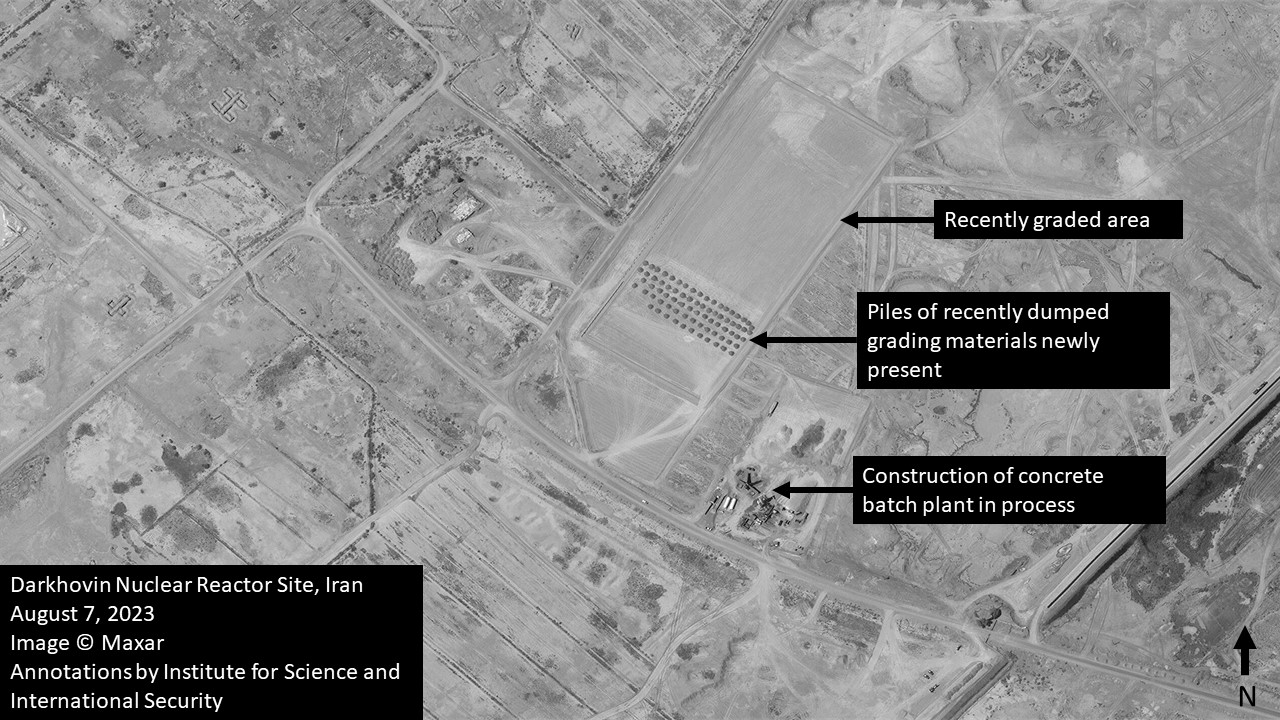
Figure 1. The Darkhovin reactor site in a Maxar August 7, 2023 commercial satellite image shows site clearing and preparation for concrete pouring
Figure 2. A Maxar image from one year earlier, on August 23, 2022 has no evidence of site clearing for the Darkhovin reactor.
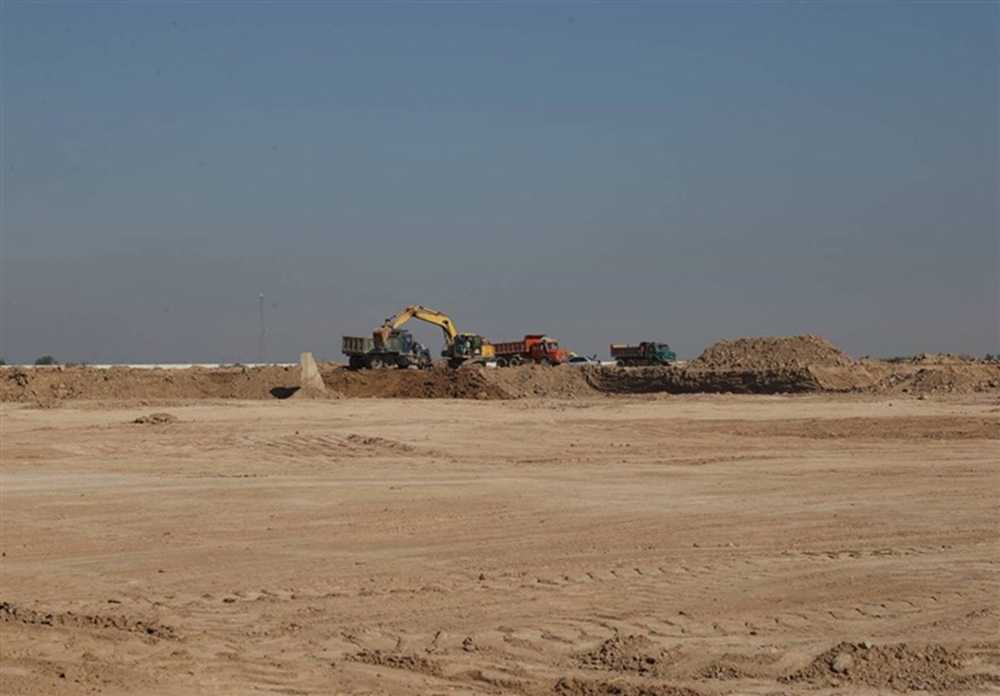
Figure 3. Ground image of the Darkhovin site in 2023, showing site clearing that matches activity in Figure 1. Source: Tasnim News, “The end of the excavation of the nuclear island of the 300 MW Karun nuclear power plant / the start of concreting of the power plant in the fall of 1403.”
On Feb. 22, 2024, Eslami again visited the Darkhovin (Dareh Khwain) reactor site and announced that the first phase of the excavation was finished. “The next operational event is the commencement of concrete pouring and foundation laying for the construction of the power plant, which we are currently on the verge of. After completing the stabilization, drainage, and site preparation operations, the first pouring of the reactor building will be carried out, likely in the fall of next year.” 5 Figure 4 is a February 23, 2024 overview of the Darkhovin site, also showing the Karun River. Figure 5 shows two commercial satellite images showing the newly graded area and a close up of the concrete batch plant and construction support area.
Figure 4. A February 23, 2024 Maxar image provides an overview of the Darkhovin site. Earlier nuclear site preparation, since abandoned, is also shown near the current site. The original 360MWe reactor excavation had a large square basement. The purpose was to place the original reactor partially below grade, but the excavation filled with water due to being below the water table adjacent to the Karun River and was abandoned. The redesigned version of the IR-360 reactor will apparently be alternatively placed above grade on an elevated pad.
Figure 5. The top, a Maxar image from February 23, 2024, shows the newly graded site for the reactor project. The bottom image is a close up of the concrete batch plant and construction support area.
Long History
The Darkhovin reactor project has a long history, mirroring the Iranian regime’s controversial birth and its actions causing its international isolation. The site is along the Karun River, in southwest Iran, near the border with Iraq (see Figure 6). Originally, the site was selected to hold two French 910 MWe pressurized water reactors (PWRs), but France pulled out after the revolution in 1979. Subsequently, China agreed in the early 1990s to construct two 300 MWe PWRs at this location. However, in 1995, China pulled out.
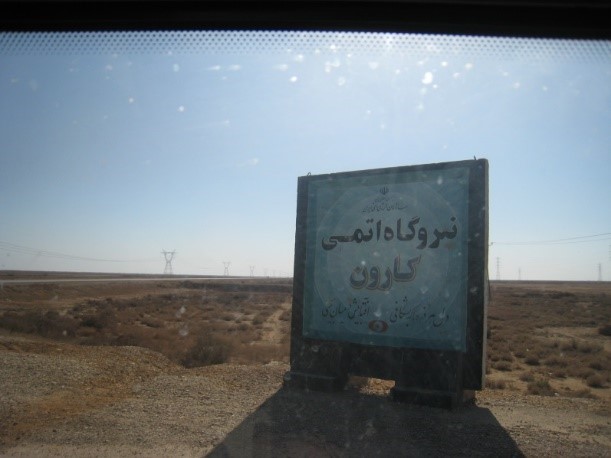
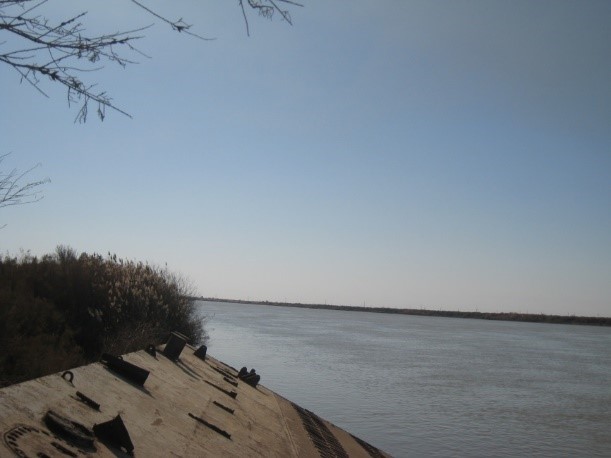
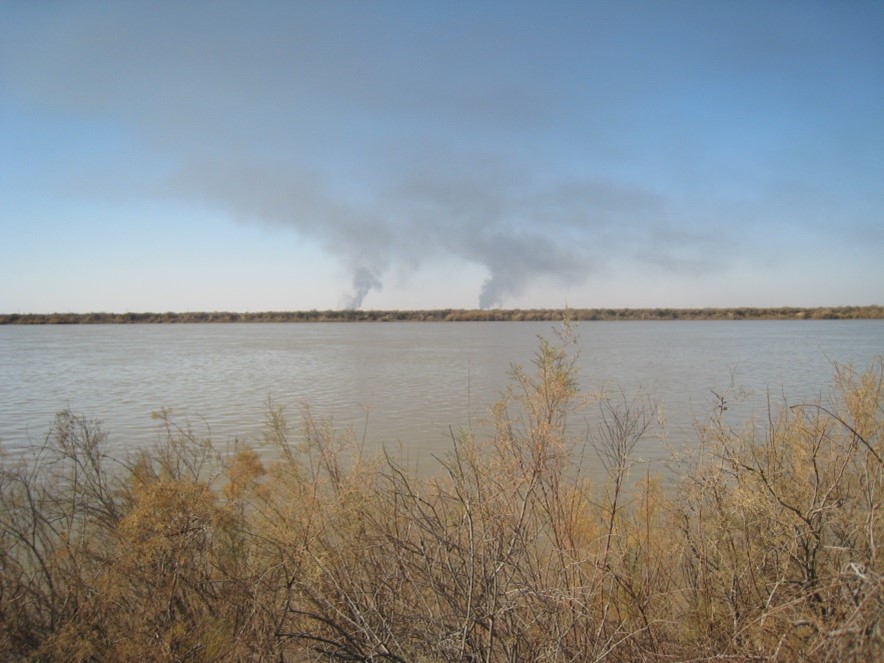
Figure 6. Pictures of the IR-360 reactor site, from an April 2018 MASNA PowerPoint presentation on the reactor project. The site is along the east bank of the Karun River: The plaque states “Karun nuclear power reactor.”
In the early to mid-2000s, Iran decided to try to build the reactor itself, rather than relying on a reactor vendor. SURENA Co., a general contractor and subsidiary of the AEOI, was put in charge of the Darkhovin nuclear reactor project. SURENA contracted the Iranian state-controlled company, Nuclear Power Plant Construction Company (MASNA) to design and construct the reactor. MASNA, created in 2006, is 49 percent owned by the AEOI, which has aimed for MASNA to become an independent private company that can successfully build nuclear power reactors in Iran. 6 Equipment Suppliers for Nuclear Industries Corporation (ESNICO), a subsidiary of SURENA, is in charge of procuring key items for the Darkhovin reactor project. Ofogh Consulting Engineers may have subcontracted to MASNA on site selection. 7
In public announcements during the 2000s, Iran stated that the reactor would be based on expertise gained in constructing the Arak IR-40 reactor. Later, it added that the Darkhovin project benefited through its experience with the Bushehr reactor, particularly the education of competent, experienced experts. It stated it has been developing an indigenous capability for the fabrication of nuclear fuel for this reactor, although information about this fuel is scarce and likely tied to Arak reactor fuel developments pre-JCPOA, which were aided by Russia in the 1990s. 8 Iran also gained fuel know-how from obtaining technology from Russia to manufacture Bushehr-type fuel.
Details about the initial Darkhovin reactor designs are scarce. However, an April 2018 presentation by MASNA (in English), “The Iranian Medium Range NPP (IR-360),” contains several pieces of information. It cites the reference reactor for this project as the Beznau nuclear power reactor in Switzerland. This is a PWR of “Westinghouse-Type.” It is doubtful that Westinghouse or the United States granted any permissions to copy this design.
The MASNA presentation also discussed the reactor’s three design stages—conceptual, basic, and detailed. The conceptual design stage started in 2005. After finalization of the reference plant, the conceptual design started in 2005. The “package, framed in 15 chapters,” was “reviewed and endorsed” by Colenco, a Swiss consulting engineering company, according to the presentation. The conceptual design stage was finalized in 2006. (In 2007, Colenco was purchased by the Swedish Company ÅF, becoming known as AF Colenco.)
According to the MASNA presentation, the basic design was concluded over a three-year period. The “basic package” was “prepared in 22 working disciplines and with the technical assistance of IPD, a Swiss engineering company.” (No further identifying information found on IPD, or its relationship to Colenco.) About 65 percent of the basic design documents were “reviewed and approved” by AF-Colenco, according to the presentation.
The detailed design stage started in 2008. It was still in progress as of 2018 and involved “22 working disciplines,” according to the presentation.
In 2012, it was about 33 percent completed, according to an internal Nuclear Power Production and Development (NPPD) report (in Farsi), “Performance Report for the First Quarter of 2012, for the Design and Construction of the IR-360 Reactor.” In 2018, according to the MASNA presentation, the detailed design was about 54 percent finished. Between 2012 and 2018, only about 20 percent more of the detailed design work had been finished, suggesting that the design teams encountered problems.
The 2012 internal NPPD report sheds light on the problems delaying the finishing of the detailed design of the reactor up to that time. According to this report (translated from Farsi), based on reports of the contractor [not identified], “Among the reasons for the delay in the detailed design phase of the project are as follows:
(1) Impossibility of cooperation with foreign companies
(2) Difficulty in preparing the technical specifications of the equipment
(3) Difficulty in supplying equipment
(4) Lack of experienced manpower
(5) Absence of reference power plant”
Later, Mohammad Ahmadian, Managing Director of NPPD and Vice-president of AEOI, stated that another problem was the lack of design software. 9
The fifth condition about the absence of a reference power plant in the detailed design phase is not explained, a potential anomaly given the MASNA’s 2018 presentation explicitly lists the Beznau PWR as the reference plant for the early design work. It is possible that by 2012, in the detailed design phase, MASNA no longer had access to Beznau designs and in any case thought they were insufficient for the detailed design phase.
One reason for the problems, and the slowdown in the detailed design stage, could be that in 2009 the Swedish government with concurrence from Switzerland blocked AF Colenco’s further cooperation with MASNA and Iran.10 This action was taken as the result of U.S. government intervention, backed up by extensive information about AF Colenco’s cooperation with the Darkhovin project, including custom design and engineering support for the Darkhovin project, “at a very detailed level.”11
Although Colenco stated to Swiss and Swedish authorities its aid was in the “public domain,” the U.S. government disagreed. Colenco indeed did use publicly available reactor design and probabilistic risk assessment methodologies. However, according to the United States, Colenco added “value” via analysis that was not in the public domain. One document provided by Colenco to Iran was marked “high confidential data,” containing “detailed reactor core design specifications derived from the output of a Dutch computer code.”
According to the United States, “Colenco also trained MASNA personnel in Switzerland on probabilistic safety analysis and may have provided technical consultations on specific Darkhovin reactor design issues.” The United States concluded, “Discussion of specific design issues with the Darkhovin reactor (the design of which is not public) would go well beyond a credible definition of ‘public domain.’”12
JCPOA
The JCPOA opened the door for Iran to obtain extensive cooperation on nuclear power plants. Under Annex III of the JCPOA, the “E3/EU+3 parties, as appropriate, will facilitate Iran’s acquisition of light-water research and power reactors.” This cooperation could involve construction and “associated equipment, according to Generation III+ requirements, including small and medium sized nuclear reactors, including joint design and manufacturing.”
According to a trip itinerary,13 AF Consult and IPD sought to provide aid to Iran’s Darkhovin and IR-40 reactors. AF Consult was part of AF Group (currently known as AFRY), which also contained AF Colenco.14 On a trip to Tehran in June 2016, six persons from AF Consult and IPD traveled to Iran for five days of meetings with the AEOI on the IR-360 and IR-40 reactors at the Hotel Azadi, according to the schedule of meetings in Tehran prepared by AF.15 AF Consult held a meeting with the AEOI to review a proposal on the IR-360. IPD held a meeting on the same trip with the AEOI on a “proposal for technical document joint development IR -360.” They also discussed nuclear fuel with the AEOI. The available documents do not state whether these companies or individuals provided any assistance.
Determining the exact amount of cooperation that benefited the Darkhovin reactor, including its detailed design, is difficult. However, it may have been extensive and involved direct transfers from overseas companies.
Assistance was also provided indirectly in the JCPOA implementation period. The Darkhovin reactor project likely gained from the many activities involving European assistance to improving the safety of the Bushehr reactor, and from ongoing Russian involvement. The JCPOA opened opportunities for Iran to obtain services, parts, equipment, and expertise for nuclear power. In general, the JCPOA created “very good conditions in the field of nuclear power,” according to Mohammad Ahmadian.16
In addition, Iran is known to have focused on developing the capability to produce and supply numerous NSG-listed items and technologies. Iran may have abided by the provisions of the deal’s Procurement Channel when convenient and ignored it in other cases.
One goal of the NPPD during the period of the JCPOA was to “compensate for our shortcoming” in design software, as discussed above.17 This effort appears to have been fruitful if Iranian nuclear officials are to be believed.
MASNA states in its 2018 presentation that the Darkhovin reactor design includes many improvements. The reactor project is slated to have an in-containment refueling water storage tank, improved safety systems, and improved capabilities of dealing with severe accidents. Several improvements are beyond those in the Beznau reactor. MASNA stated that the “preliminary design of the reference plant (Beznau), ranks as generation II.” It states that the IR-360 safety systems have “substantially improved, such that it can be ranked as generation III.”
Equipment manufacturing has challenged Iran. In 2012, according to the internal NPPD report, only a few percent of the equipment and other supplies had been acquired. According to MASNA’s presentation in 2018, “Some attempts for manufacturing of equipment including RPV [reactor pressure vessel], SG [steam generator], PRZ [pressurizer], and CRDM [control rod drive mechanism] have been conducted/made.” MASNA added, “In order to develop detailed design documents and complete the related packages, manufacturing data is required.” It appealed to vendors, “Any tendency from the vendors for the provision of manufacturing data is welcomed.”
Europeans largely stopped cooperating after the sanctions restarted in 2018/2019. Nonetheless, Iran has acted as if it can finish the Darkhovin design and construct the reactor.
With the collapse of the JCPOA starting in 2018, Iran intensified its procurements for its nuclear sector, regardless of its legality. In particular, it sought technology from supplier states, and the following were involved in obtaining technology for the IR-360 reactor after 2018:
MASNA
Faculty of Engineering, Shahid Beheshti University
Nuclear Engineering Department, Islamic Azad University
Faculty of Energy Engineering and Physics, Amir Kabir University
School of Mechanical Engineering, Shiraz University
Safety Research Center of Shiraz University
In April 2022, the AEOI announced a comprehensive program to intensify industrial self-sufficiency, including the IR-360 reactor. Accomplishing self-sufficiency will require uncontrolled procurements, including via intangible transfers of technology and scientific and engineering collaboration.
MASNA has certainly grown. A short, cryptic blurb in Google for the MASNA web site, no longer accessible, states that it had designed about “30,000 specialized power plant documents that were previously done by foreign contractors; Localization and manufacturing of more than 5000 parts and equipment for power plants and industries; More than 20,000 people.”
When AEOI head Eslami visited the reactor site in December 2023, he reported that domestic companies would build the mechanical equipment of the plant and the primary cooling pumps, as well as the design and construction of the primary circuit coolant pumps and safety pumps for the plant’s cooling system.18 Already in 2018, MASNA stated in its presentation that it had achieved “self-sufficiency in the field of designing” nuclear power plants. Despite these pronouncements, it is difficult to judge whether Iran can successfully design and build the Darkhovin reactor, including all its key components, let alone judge their quality or ability to function safely once assembled into the reactor.
Iran has shown its determination to build the Darkhovin reactor, along with other small and medium-sized reactors, regardless of the fate of the JCPOA. In any case, the JCPOA never banned such projects in the long run, even though some of the small reactors could be capable of producing plutonium for nuclear weapons. There is no evidence of a review, or at least an adequate review, of the security and non-proliferation implications of the JCPOA’s articles on nuclear power cooperation with Iran.
The JCPOA provided an avenue for Iran to acquire many relevant technologies to design and build reactors and manufacture key equipment and reactor components. There is now a growing risk of their misuse and spread.
1. IAEA Director General, “NPT Safeguards Agreement with the Islamic Republic of Iran, GOV/2024/8, February 26, 2024.↩
2. The actual electrical gross output could vary from 360 MWe, as well as its net electrical output after subtracting for in-plant electrical requirements. The rated thermal power of the reactor is 1130 megawatts-thermal, according to official technical specifications of the reactor. The reactor will contain about 40 tons of low enriched uranium (LEU) mass in about 120 fuel assemblies and require an annual refueling of about 13 tons of LEU.↩
3. 3 ISNA, “The Start of the Construction of the ‘Karun’ Nuclear Power Plant in Darkhovin,” December 12, 2022, in Farsi,https://www.isna.ir/news/1401091207305/%D8%A2%D8%BA%D8%A7%D8%B2- %D8%B9%D9%85%D9%84%DB%8C%D8%A7%D8%AA-%D8%A7%D8%AD%D8%AF%D8%A7%D8%AB- %D9%86%DB%8C%D8%B1%D9%88%DA%AF%D8%A7%D9%87-%D8%A7%D8%AA%D9%85%DB%8C- %DA%A9%D8%A7%D8%B1%D9%88%D9%86-%D8%AF%D8%B1- %D8%AF%D8%A7%D8%B1%D8%AE%D9%88%DB%8C%D9%86. ↩
4. David Albright, Sarah Burkhard, Spencer Faragasso, and the Good ISIS Team, “Imagery Update: Construction is Ongoing at the Natanz Tunnel Facility,” Institute for Science and International Security, March 25, 2024.↩
5. Tasnim News, “The end of the excavation of the nuclear island of the 300 MW Karun nuclear power plant / the start of concreting of the power plant in the fall of 1403,” February 23, 2024,https://www.tasnimnews.com/fa/news/1402/12/04/3043626/%D9%BE%D8%A7%DB%8C%D8%A7%D9%86- %D8%AE%D8%A7%DA%A9%D8%A8%D8%B1%D8%AF%D8%A7%D8%B1%DB%8C- %D8%AC%D8%B2%DB%8C%D8%B1%D9%87-%D9%87%D8%B3%D8%AA%D9%87-%D8%A7%DB%8C- %D9%86%DB%8C%D8%B1%D9%88%DA%AF%D8%A7%D9%87-%D8%A7%D8%AA%D9%85%DB%8C-300- %D9%85%DA%AF%D8%A7%D9%88%D8%A7%D8%AA%DB%8C-%DA%A9%D8%A7%D8%B1%D9%88%D9%86- %D8%A2%D8%BA%D8%A7%D8%B2-%D8%A8%D8%AA%D9%86-%D8%B1%DB%8C%D8%B2%DB%8C- %D9%86%DB%8C%D8%B1%D9%88%DA%AF%D8%A7%D9%87-%D8%AF%D8%B1- %D9%BE%D8%A7%DB%8C%DB%8C%D8%B2-1403. ↩
6. ISNA, “A conversation with the Head of Iran’s Nuclear Power Production,” June 20, 2016,https://www.isna.ir/news/95033118349/%DA%AF%D9%81%D8%AA-%D9%88%DA%AF%D9%88-%D8%A8%D8%A7- %D9%85%D8%B3%D8%A6%D9%88%D9%84-%D8%AA%D9%88%D9%84%DB%8C%D8%AF- %D8%A8%D8%B1%D9%82-%D9%87%D8%B3%D8%AA%D9%87-%D8%A7%DB%8C- %D8%A7%DB%8C%D8%B1%D8%A7%D9%86. ↩
7. US State Department, “Meeting with Swiss Head of Export Control Policy and Sanctions Erwin Bollinger on Colonco,” September 30, 2009, in Public Library of US Diplomacy.↩
8. The issue of assistance on Arak fuel from the Russian entity NIKIET and a Russian company in Obninsk is discussed in “Update on the Arak Reactor in Iran,” August 25, 2009,https://isis-online.org/uploads/isis-reports/documents/Arak_Update_25_August2009.pdf; and “Mysteries Deepen Over Status of Arak Reactor Project” by David Albright, Paul Brannan, and Robert Kelley, August 11, 2009, https://isis-online.org/uploads/isis- reports/documents/ArakFuelElement.pdf. ↩
9. “A conversation with the Head of Iran’s Nuclear Power Production.” ↩
10. UPI, “U.S. Blocked Swedish Firms Aiding Iran,” January 17, 2011; and “Meeting with Swiss Head of Export Control Policy and Sanctions Erwin Bollinger on Colenco.” ↩
11. “Meeting with Swiss Head of Export Control Policy and Sanctions Erwin Bollinger on Colenco.” ↩
12. Ibid. ↩
13. AF Consult/IPD Delegation for meeting with AEOI in Tehran, 18.06 -23.06.2016, C:\Daten\IRAN 2015\VISIT 2016 – JUNE 2016\Meetings Schedule June 2016.Docx. ↩
14. AF Colenco has been owned by ÅF Group since 2007. ÅF was merged with Poyry to become AFRY in 2019. ↩
15. AF Consult/IPD Delegation for meeting with AEOI in Tehran. ↩
16. “A conversation with the Head of Iran’s Nuclear Power Production.” ↩
17. “A conversation with the Head of Iran’s Nuclear Power Production.” ↩
18. ISNA, “The Start of the Construction of the ‘Karun’ Nuclear Power Plant in Darkhovin,” December 12, 2022, in Farsi, https://www.isna.ir/news/1401091207305/%D8%A2%D8%BA%D8%A7%D8%B2-%D8%B9%D9%85%D9%84%DB%8C%D8%A7%D8%AA-%D8%A7%D8%AD%D8%AF%D8%A7%D8%AB-%D9%86%DB%8C%D8%B1%D9%88%DA%AF%D8%A7%D9%87-%D8%A7%D8%AA%D9%85%DB%8C-%DA%A9%D8%A7%D8%B1%D9%88%D9%86-%D8%AF%D8%B1-%D8%AF%D8%A7%D8%B1%D8%AE%D9%88%DB%8C%D9%86 ↩

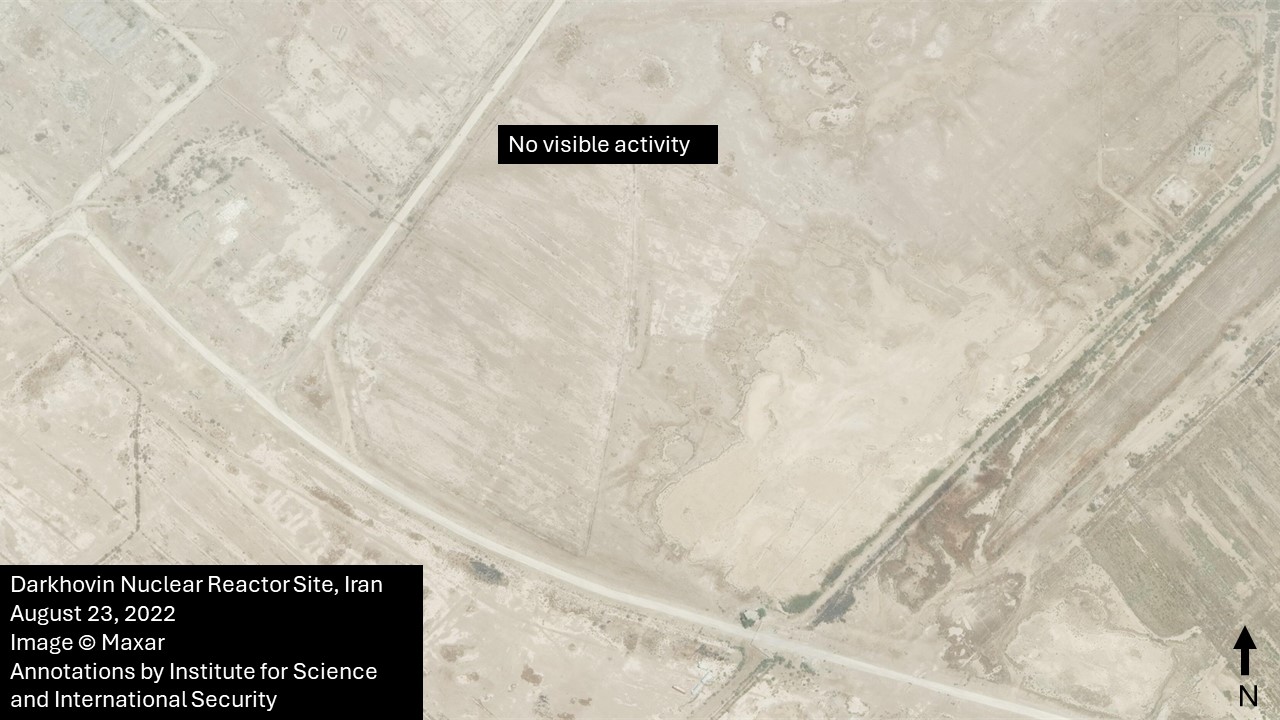
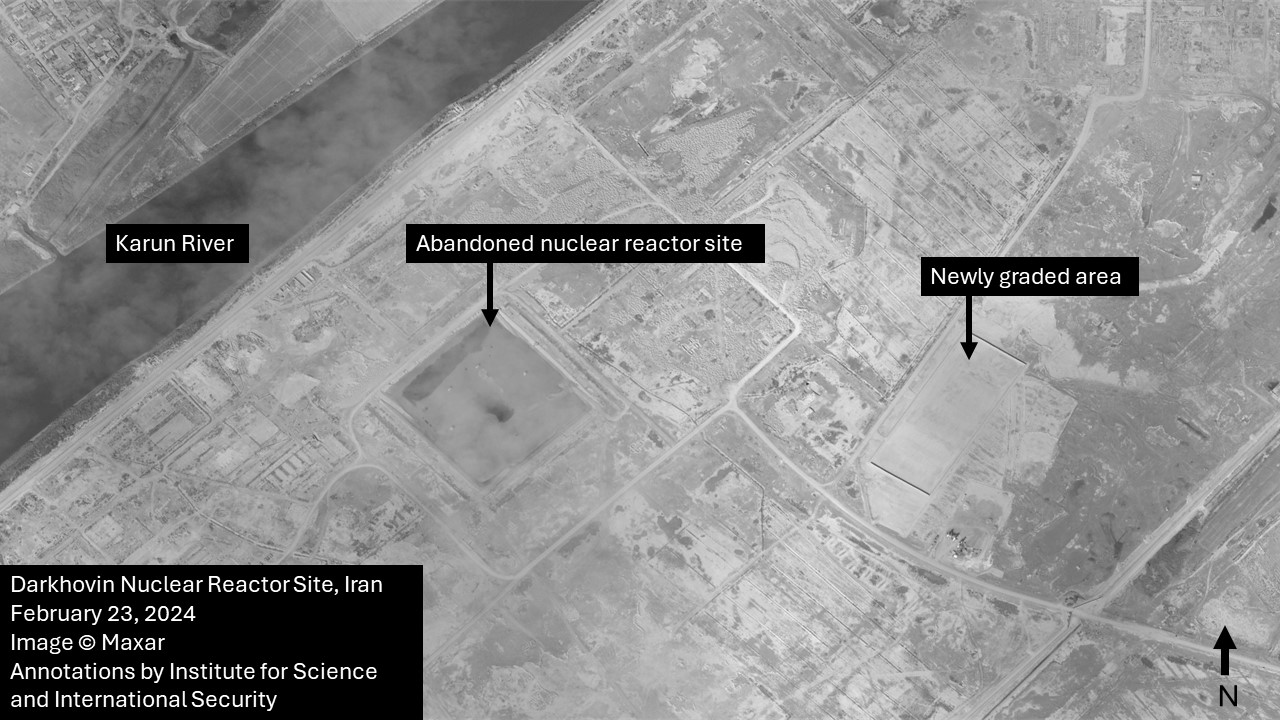
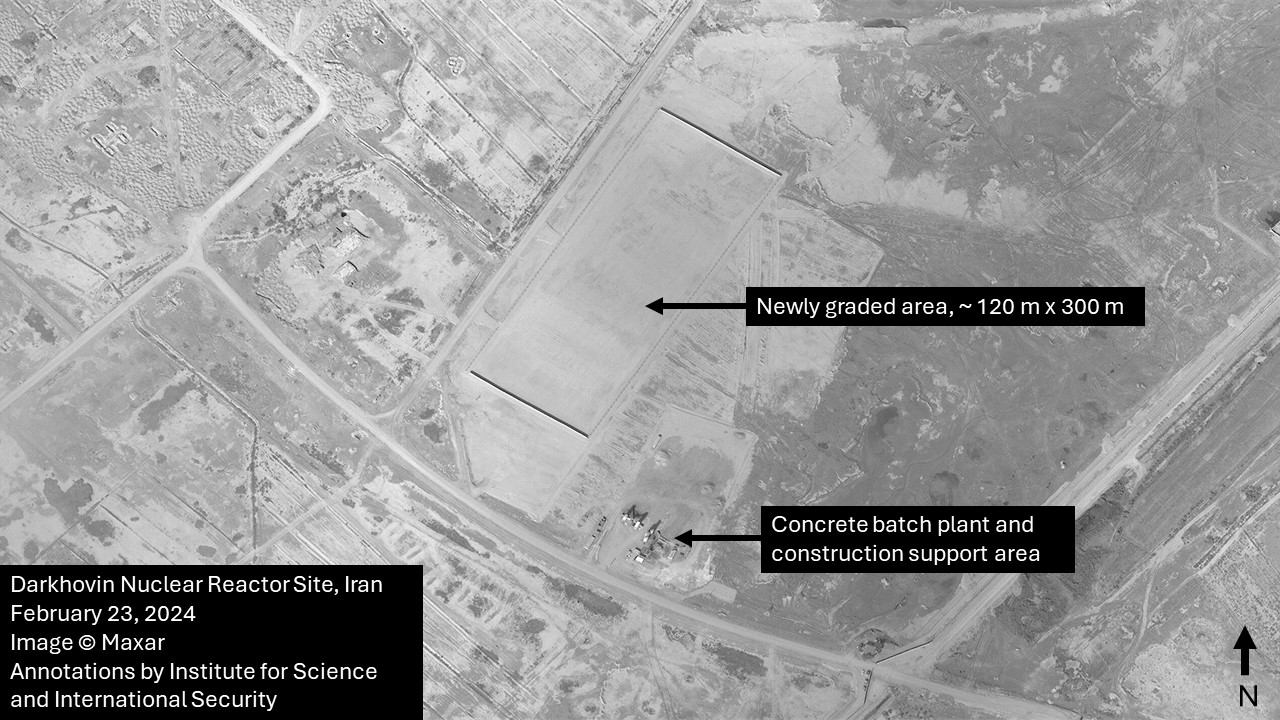
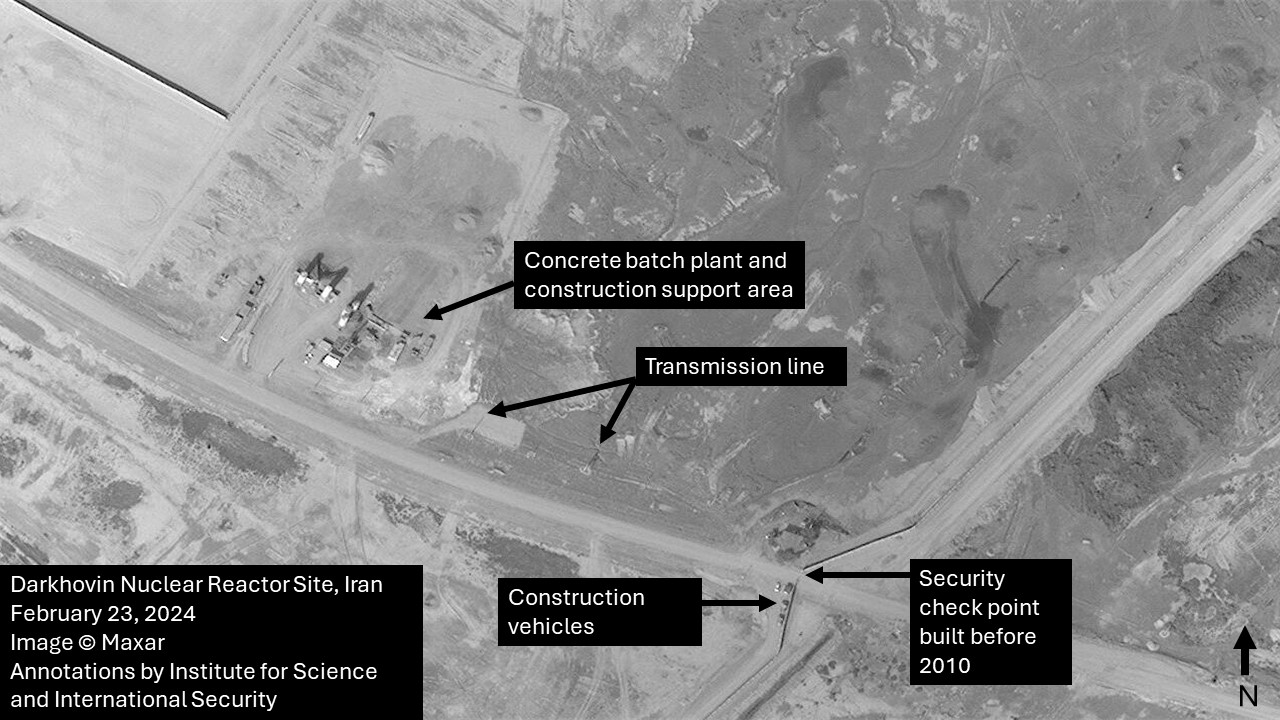
 twitter
twitter